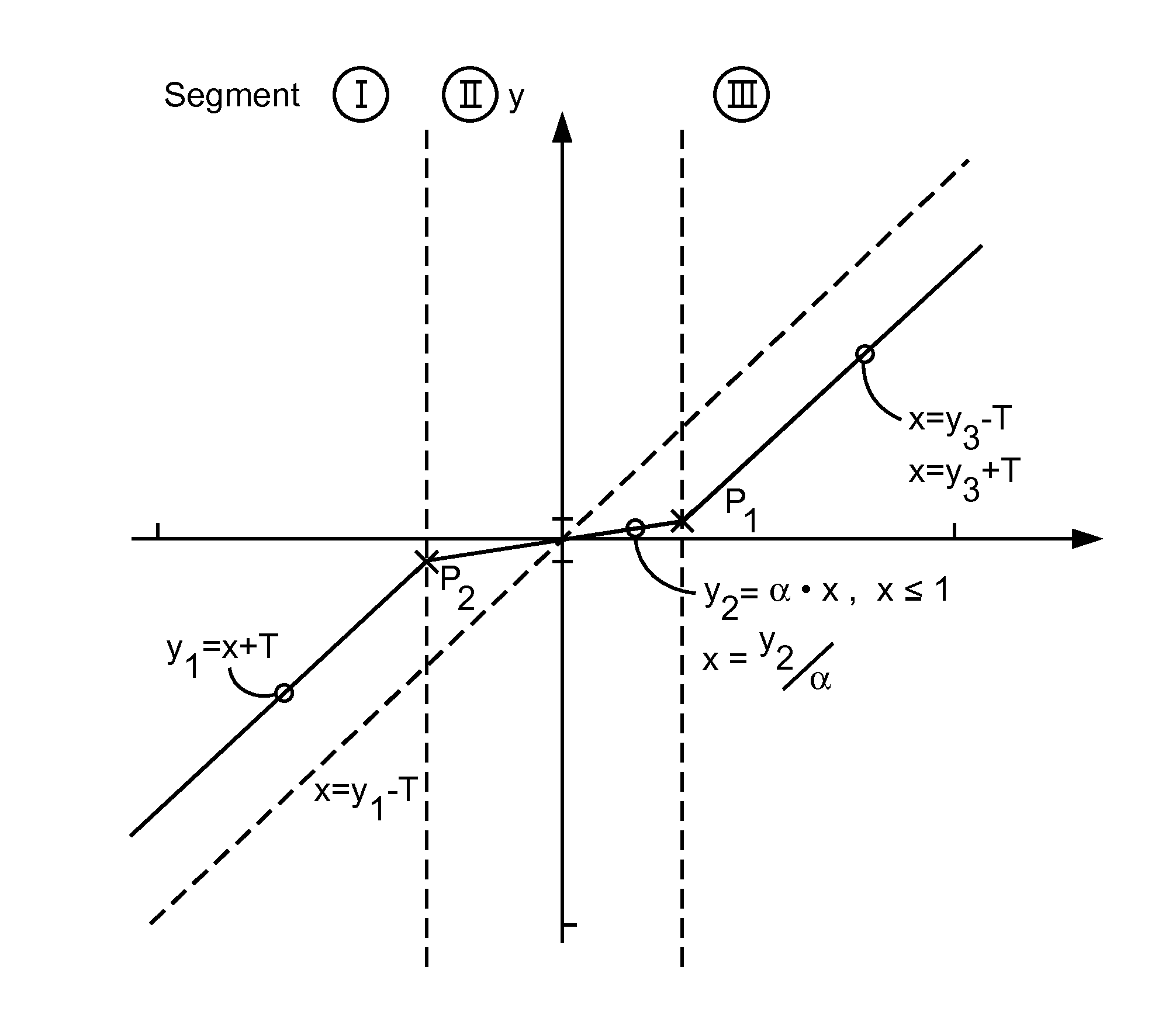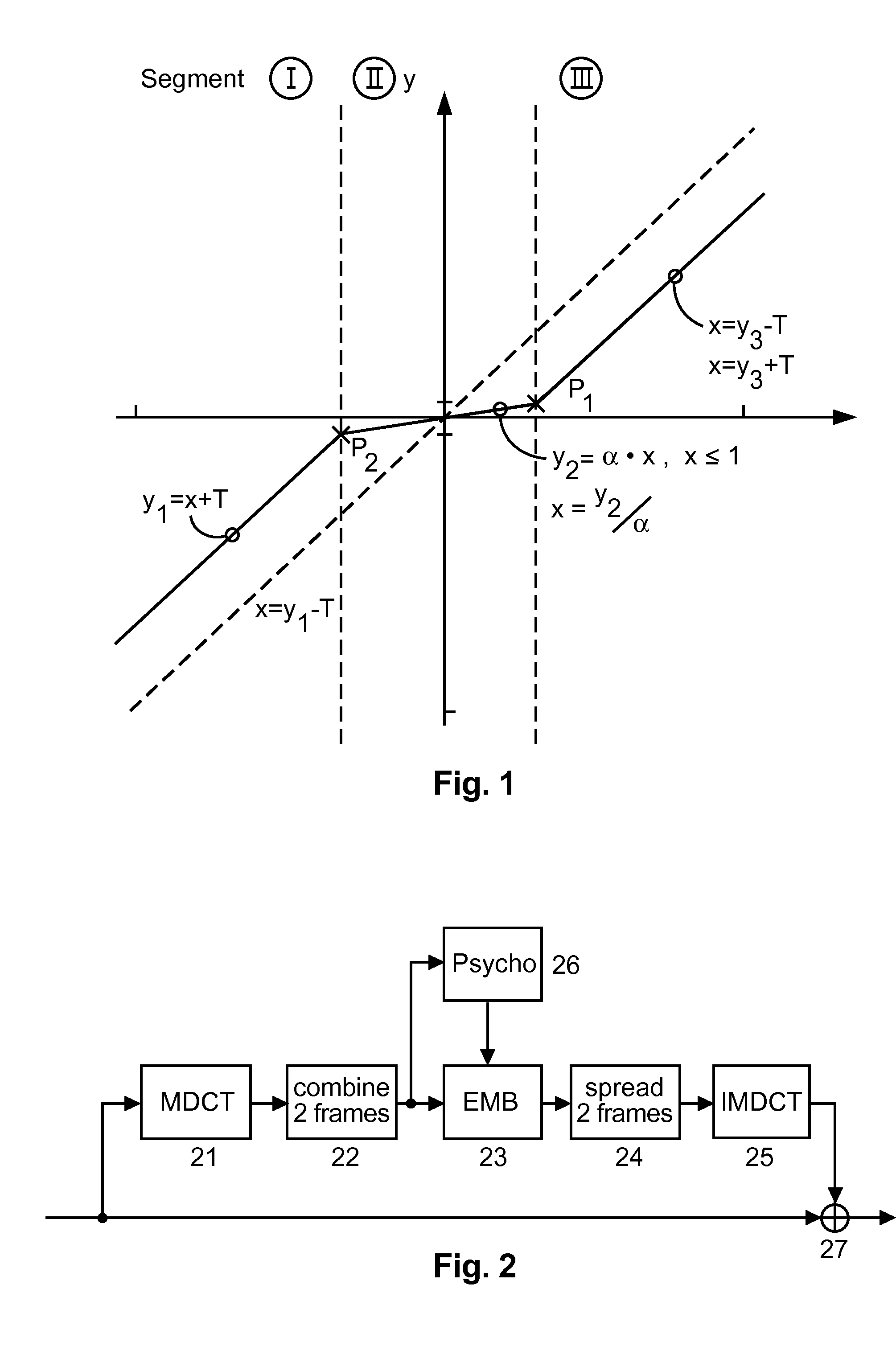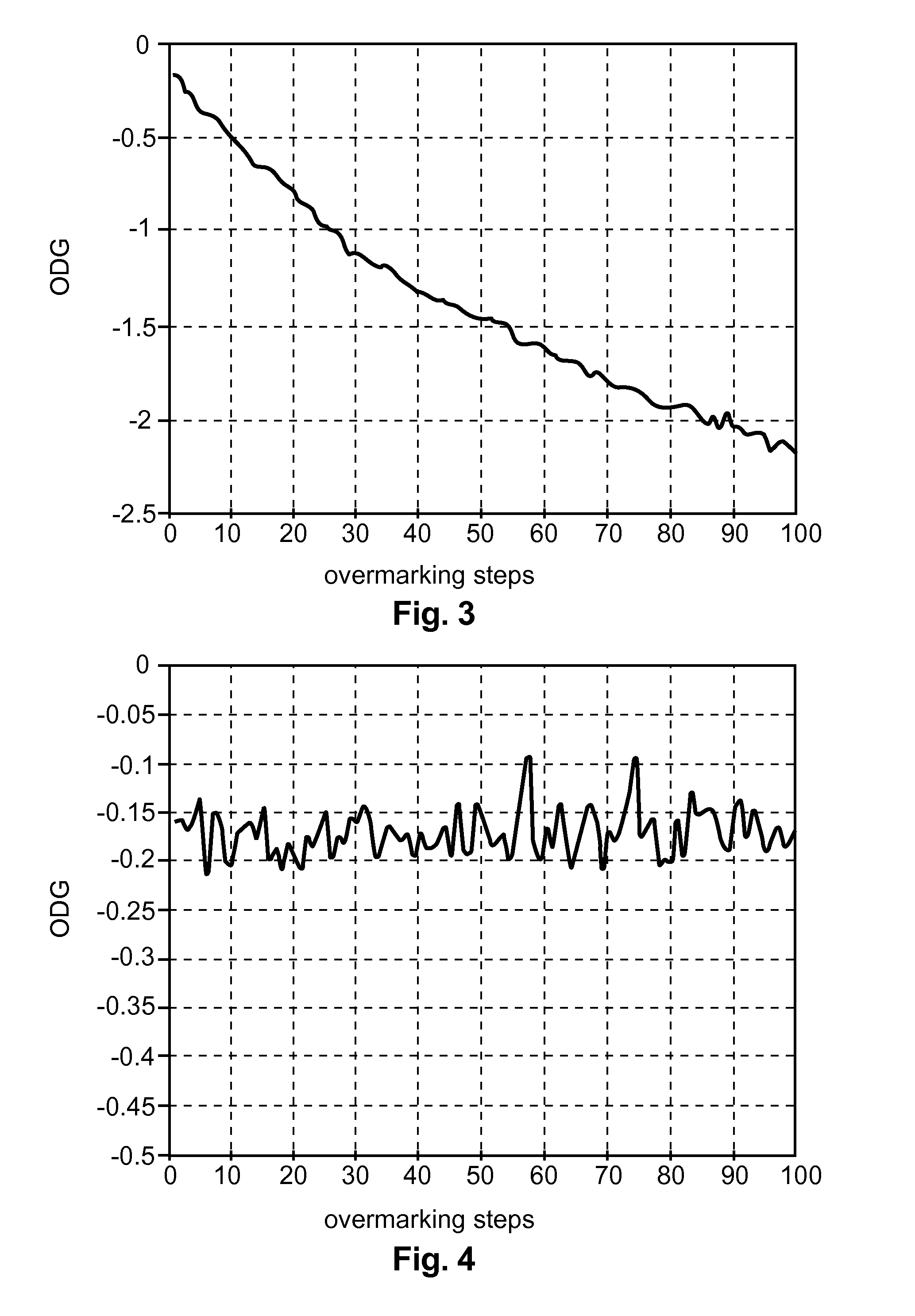Method and apparatus for quantisation index modulation for watermarking an input signal
a technology of quantisation index and input signal, applied in the direction of speech analysis, instruments, etc., can solve the problem that the chen/wornell processing is by definition non-reversible, and achieve the effect of robustness and capacity characteristics
- Summary
- Abstract
- Description
- Claims
- Application Information
AI Technical Summary
Benefits of technology
Problems solved by technology
Method used
Image
Examples
Embodiment Construction
[0027]Reversible QIM watermarking with embedding power constraint The invention extends QIM in order:[0028]to make the mapping performed at the embedder to be reversible at the decoder and[0029]to allow to take a power constraint into account when embedding a watermark.
[0030]The related characteristic curve of the quantiser has to fulfil the following two constraints:[0031]the difference between the input and output value at any position shall not be greater than T (the embedding power constraint),[0032]the characteristic curve shall be reversible, that is for any input value x there shall be one unique output value y.
[0033]An example of a characteristic curve for one of the quantisers for the inventive reversible QIM processing with embedding power constraint is shown in FIG. 1 with output y versus input x. The curve can be divided into three linear segments I, II, III marked at the top of the figure. In segments I and III the output is shifted by the amount of T towards the refere...
PUM
 Login to View More
Login to View More Abstract
Description
Claims
Application Information
 Login to View More
Login to View More - R&D
- Intellectual Property
- Life Sciences
- Materials
- Tech Scout
- Unparalleled Data Quality
- Higher Quality Content
- 60% Fewer Hallucinations
Browse by: Latest US Patents, China's latest patents, Technical Efficacy Thesaurus, Application Domain, Technology Topic, Popular Technical Reports.
© 2025 PatSnap. All rights reserved.Legal|Privacy policy|Modern Slavery Act Transparency Statement|Sitemap|About US| Contact US: help@patsnap.com



